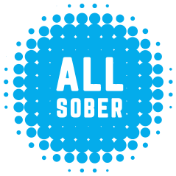What Is Dual Diagnosis?
Understanding dual diagnosis can be crucial to making sure you or your loved one receives the right treatment

Addiction rarely occurs in isolation. A genetic predisposition to substance use disorder or the pull of addictive substances are often complicated by a person’s mental health history. When people are dealing with both substance use disorder and mental illness, they are said to have a dual diagnosis, also referred to as co-occurring disorders.
Being well-informed about co-occurring disorders can help you (or a loved one) connect with treatment resources to help you recover. Getting into the right recovery program that can help you manage both conditions both reduces the risk of relapse and increases the chances for long-term sobriety.
Here are 10 things that you should know about co-occurring disorders.
1. Dual diagnosis is common
Substance use disorder and mental illness often go hand in hand. The National Alliance on Mental Illness reports that nearly 8 million Americans are living with a co-occurring substance use disorder and mental health condition.
2. People with mental illness often turn to illicit drugs
About one-third of all people with a mental health condition and half of people with serious mental illness have a co-occurring substance use disorder. Because many people with mental illness lack resources to access care for their condition, they might turn to illicit drugs or abusing alcohol in order to self-medicate their condition.
3. Understanding of co-occurring disorders has increased
Health professionals used to think that substance use disorders and mental health conditions were a moral failing or caused by mental weakness. However, understanding of both conditions has advanced rapidly and new information is regularly released on co-occurring disorders.
4. Both conditions must be treated
In the past, doctors thought that substance use disorder had to be rectified before a person could get treatment for their mental illness. However, today most health care providers recognize that the best outcomes occur when both conditions are treated simultaneously. This is called integrated treatment.
Today, there are evidence-based treatments for both substance use disorder and mental illness. People with dual diagnoses can make great progress in managing their conditions through a combination of medication and therapy.
5. Substance use can contribute to mental health conditions
Trying to figure out which condition came first can be a chicken-and-egg situation. However, research shows that some substance use can contribute to or exacerbate mental health complications. Some research studies have linked early marijuana use to an increased risk for psychosis in adulthood.
6. Dual diagnoses requires custom care
Some medications used to treat mental illness have the potential to be abused. It’s important that people with dual diagnoses connect with a treatment professional who can help them develop a medication management plan that addresses both conditions.
7. Genetics and environment play a role
Scientists believe that 40–60% of a person’s risk for substance use disorder is associated with genetics. The rest is influenced by epigenetic and environmental factors such as childhood trauma.
8. Stress exacerbates these disorders
Both mental illness and substance use disorder are made worse when a person is stressed, because this sensation changes how the brain functions: The National Institute on Drug Abuse explains that stress reduces the functioning of the prefrontal cortex, which helps people make rational decisions, and increases activity in the striatum that can lead to more impulsive behavior.
9. Early intervention is important
Teens who have a co-occurring substance use disorder and mental illness benefit greatly from early intervention. Connecting teens with treatment that understands dual diagnoses can help them learn to manage both conditions without either getting to the point of crisis.
10. Support is available
People with dual diagnoses can find help from traditional recovery programs such as Alcoholics Anonymous or Narcotics Anonymous. However, they might also benefit from involvement with programs that are specifically designed for people with co-occurring disorders. Double Trouble in Recovery is a 12-step program for people with co-occurring disorders.
More Help & Information
Sobriety vs. Recovery: What's the Difference?
Are the concepts themselves up for debate? Do they require certain treatments, or abstinence from everything? It's complicated! And new ways of thinking are changing the conversation.
Now Elite NFL Players, They First Tackled Addiction | News Roundup
All Sober compiles the best of the latest headlines. Here's your addiction and recovery news for the week of Feb. 19, 2024!
Help Them Help You: Explaining Your Mental Health to Your Family
Your mental health can affect — and be affected by — your loved ones. Here's how to discuss it with them so everyone can heal.
Dry January (and Beyond): The Possibilities Are Endless
There's never been a better time to go sober. Whether you're trying it out this month or already living the life, join us for some tips, ideas, inspiration — and maybe even new friends.
Sober Holiday Tips: Meeting 'Share-a-Thons'
Need to get out of the house for a bit and see some friendly sober faces? Recovery support group meeting marathons run 24/7 from Christmas Eve through New Year's Day.
What Happens After an Intervention?
Your loved one agreed to get treatment for addiction during their intervention — or not. Here's what you need to know about what comes next.
We're in This Together: Building a Healthy Sober Support Network
You are the captain of your recovery, but you don't have to do it alone. A sober support network will lift you up in tough times and celebrate your triumphs.
Real-Life Recovery Tips: Phone a Friend
When you're traveling, you can take your sober support network with you — right in your pocket. Rocker Kasim Sulton shares his top recovery tip in this video.











